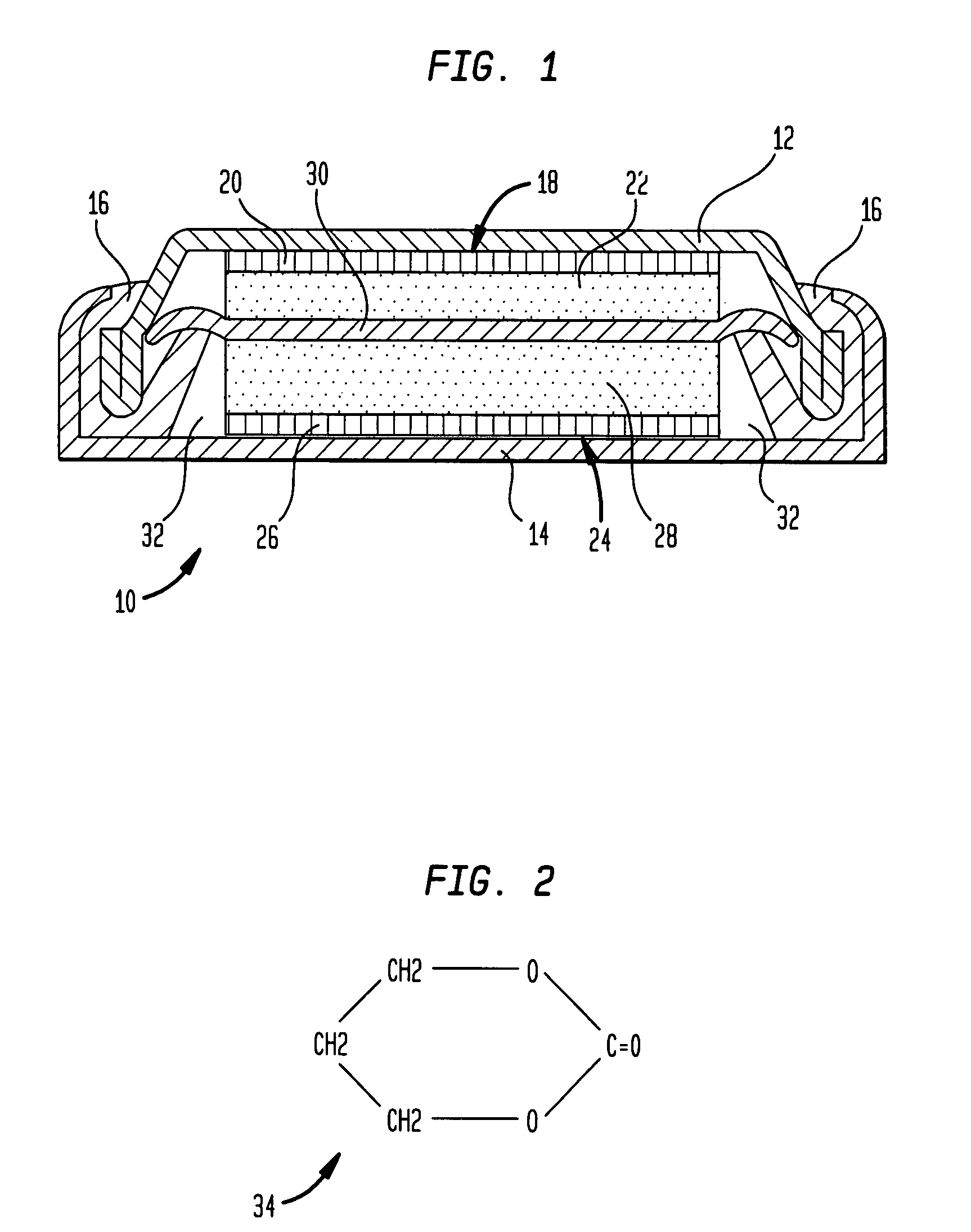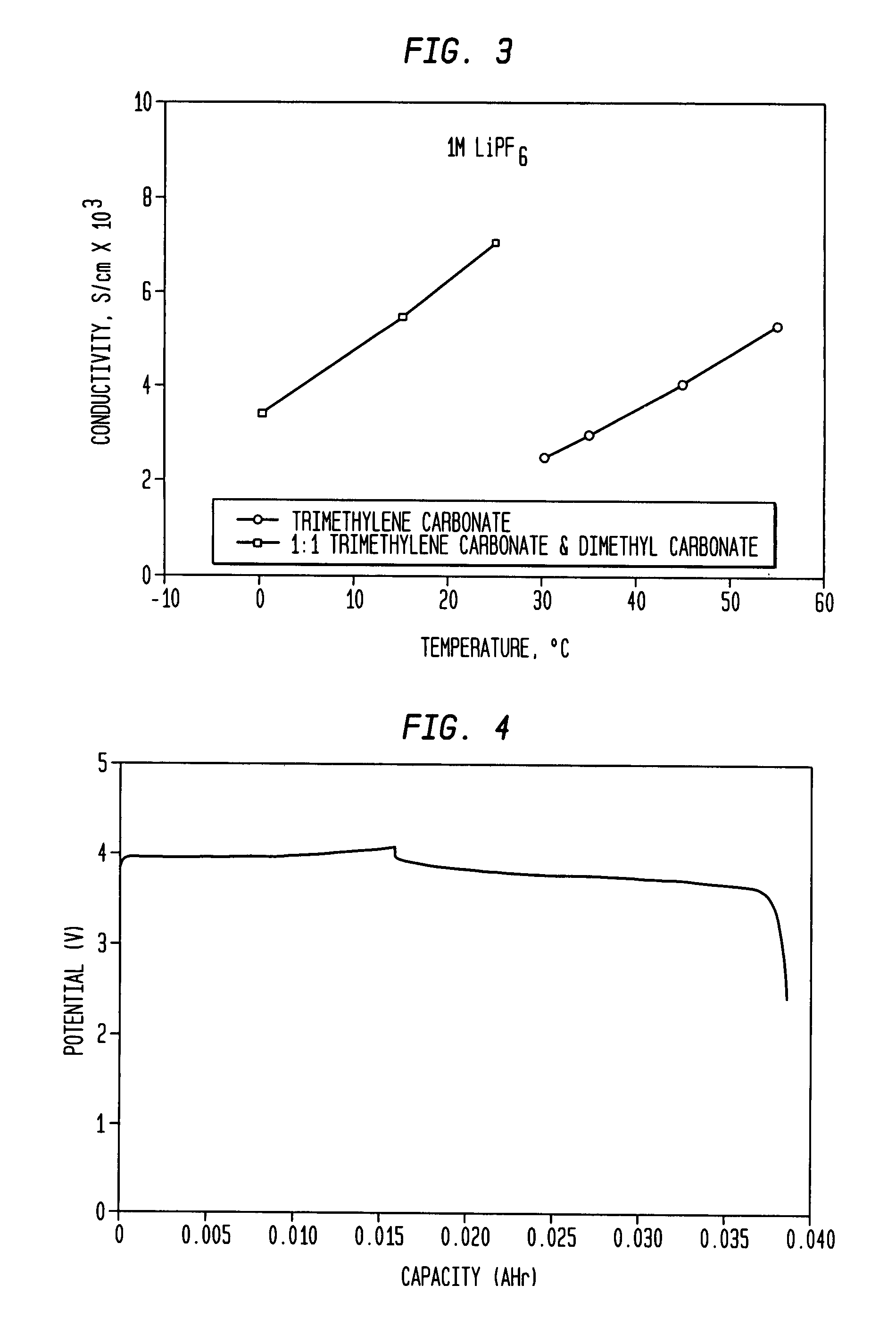Carbonate solvent for electrolytes in lithium and lithium ion cells
a lithium ion and lithium ion technology, applied in the field of organic solvents, can solve the problems of prior art organic solvent based electrolytes lacking these two critical properties, degrading cell performance, and not embracing the approach, so as to prevent the formation of unwanted and deleterious insulation, and increase the electrochemical cell performance
- Summary
- Abstract
- Description
- Claims
- Application Information
AI Technical Summary
Benefits of technology
Problems solved by technology
Method used
Image
Examples
Embodiment Construction
[0021]One embodiment of the present invention concerns an electrochemical cell or rechargeable / non-rechargeable battery that includes a cyclic organic solvent for a non-aqueous electrolyte. The organic solvent may comprise trimethylene carbonate (C4H6O3) that has a relatively high dielectric constant. It has been found that an especially high energy density output may be attained from a battery containing a non-aqueous electrolyte with such an organic solvent.
[0022]Referring now to FIG. 1, an electrochemical cell, comprising a non-aqueous electrolyte in accordance with one embodiment of the present invention, is illustrated generally at 10. In this embodiment, the electrochemical cell or battery 10 comprises a negative electrode case 12 and a positive electrode case 14 that are interconnected by an insulating gasket 16 composed of, e.g., polypropylene. It will be recognized that the battery 10 is shown for illustrational purposes only and, e.g., may be rechargeable or non-rechargeab...
PUM
| Property | Measurement | Unit |
|---|---|---|
| dielectric constant | aaaaa | aaaaa |
| viscosity | aaaaa | aaaaa |
| ion mobility | aaaaa | aaaaa |
Abstract
Description
Claims
Application Information
 Login to View More
Login to View More - R&D
- Intellectual Property
- Life Sciences
- Materials
- Tech Scout
- Unparalleled Data Quality
- Higher Quality Content
- 60% Fewer Hallucinations
Browse by: Latest US Patents, China's latest patents, Technical Efficacy Thesaurus, Application Domain, Technology Topic, Popular Technical Reports.
© 2025 PatSnap. All rights reserved.Legal|Privacy policy|Modern Slavery Act Transparency Statement|Sitemap|About US| Contact US: help@patsnap.com


